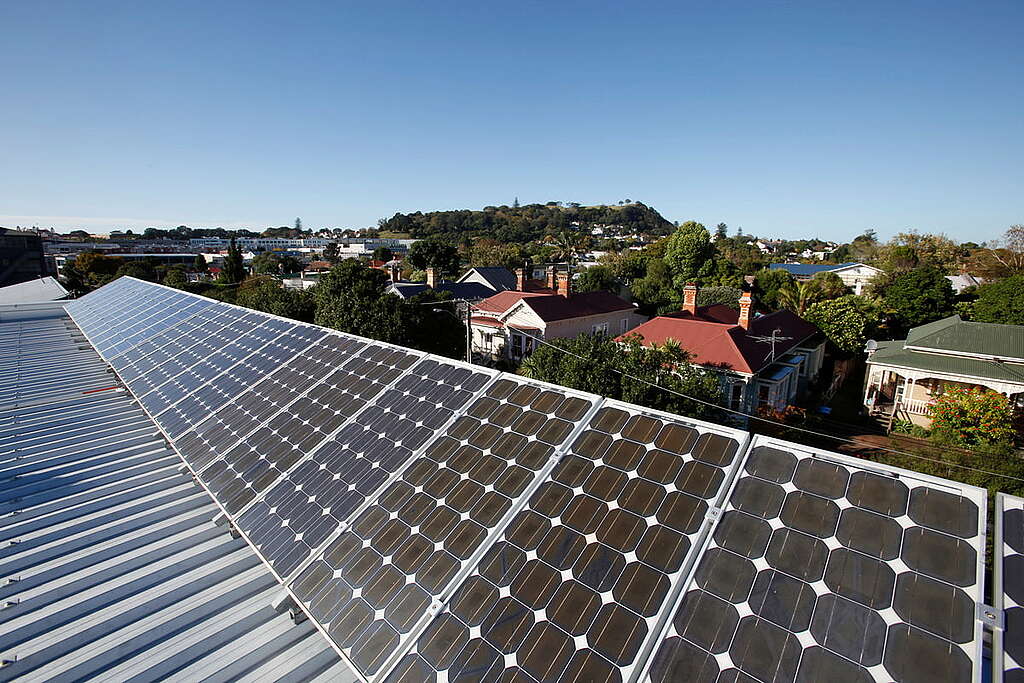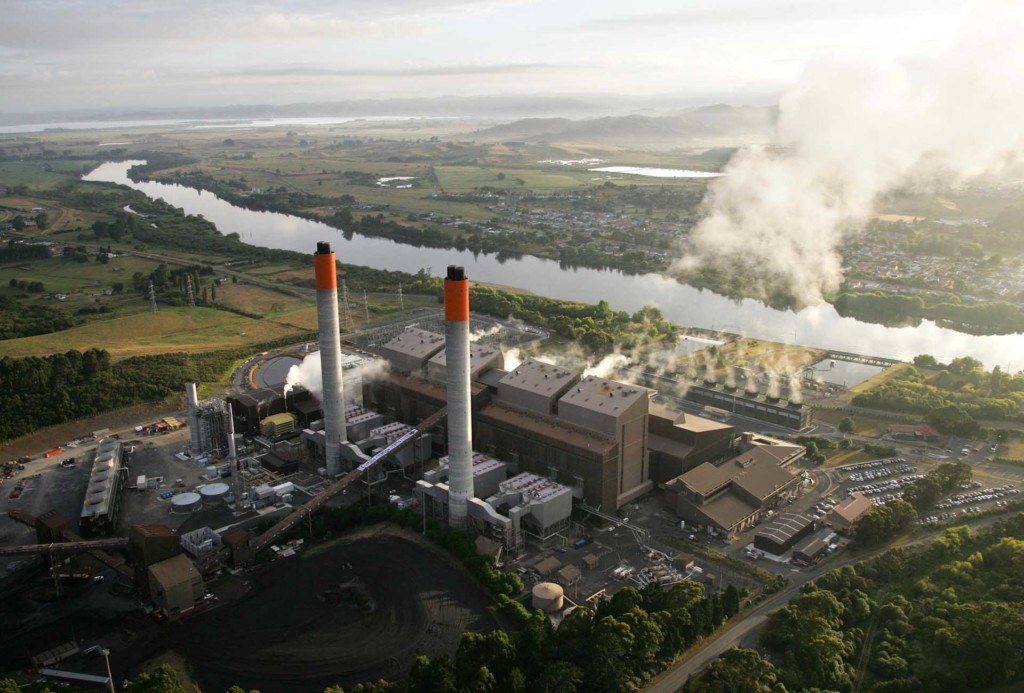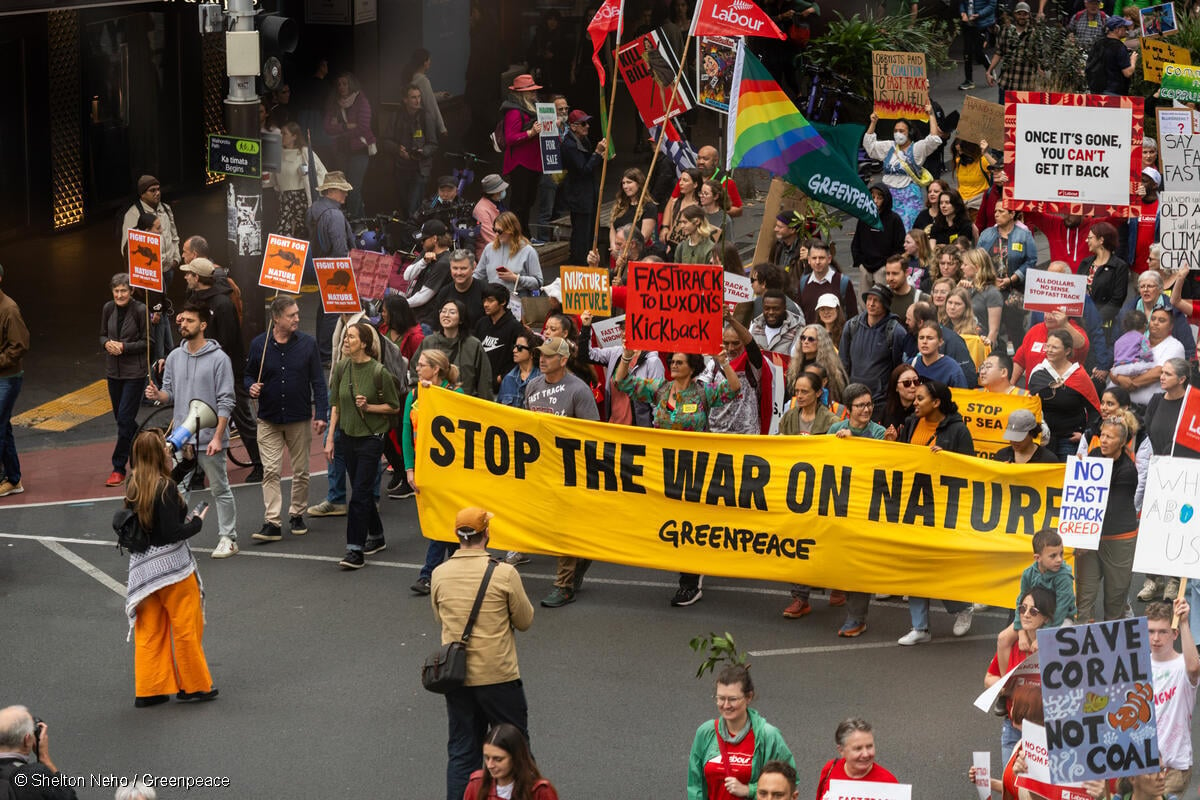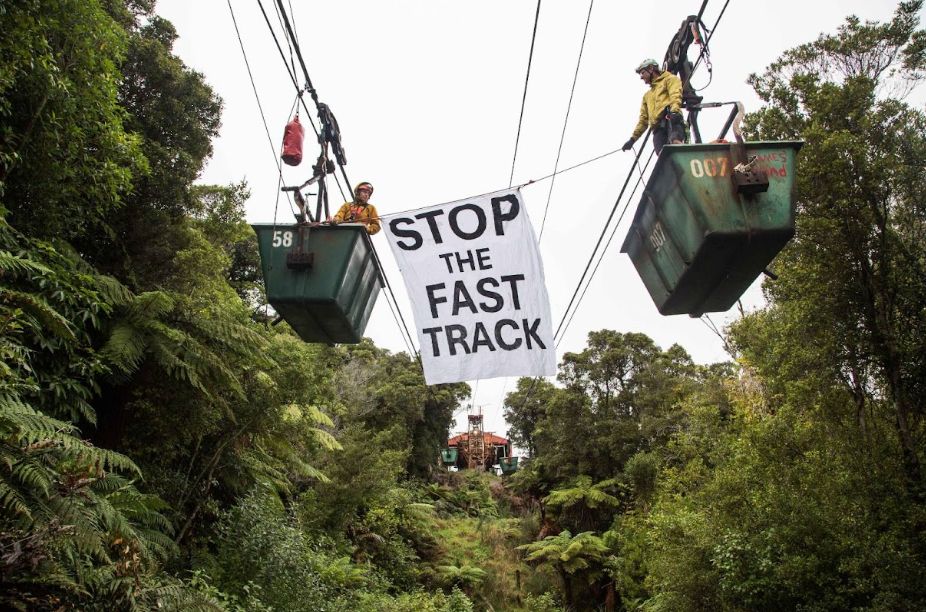Aotearoa is at an energy crossroads. We have to choose between a Clean Energy Future and a Dirty Energy Future.
In recent weeks the Government and fossil fuel lobby groups have made it clear that, not only are they pushing to restart oil and gas exploration, they also want to build a fossil gas import facility, and they want new gas powered electricity generation. They are trying to lock our country into an expensive Dirty Energy Future.
But we have a much better choice – a Clean Energy Future!
The Clean Energy Future builds on our existing renewable electricity generation by adding more solar and wind electricity generation. The solar generation is both small-scale distributed on people’s roofs and large-scale utility generation.
Solar and wind are the cheapest forms of new generation and will bring down the price of electricity by crowding out expensive coal and fossil gas. Every kilowatt of solar and wind generated saves water in the hydro generation system for when we really need it.

Renewable energy is home-grown
When we’re generating electricity from the wind and the sun, we’re not handing over our hard-earned money to foreign oil companies. Instead, it stays in circulation right here in Aotearoa, which helps us all.
Increased energy storage
The Clean Energy Future has more energy storage, again both small-scale distributed household batteries and large-scale utility storage. Storing the solar energy from the day gets us through the evening peak load without burning expensive dirty fossil gas and coal. The storage in the hydro lakes is conserved by all the solar and wind generation for when we really need it. We explore what longer-term storage we need for a dry winter, which occurs every 4 to 5 years.
More electric transport
The Clean Energy Future has more electric transport – more electric bikes, buses, cars, trains, scooters and trucks. Our vehicle fleet uses less energy, because electric vehicles are more efficient than internal combustion engines. And we can combine this with improved urban planning, so that our towns and cities are designed for people, not cars.
Electrify industrial processes
The Clean Energy Future electrifies industrial processes like dairy boilers to eliminate coal. Our exports are renowned for their low pollution and we amplify our clean and green image and get higher prices for our exports.
Reward consumers
In our Clean Energy Future consumers get rewarded to move their electricity consumption away from the peak load periods (early evening) by time-of-use pricing. Lower off-peak prices reward consumers for moving as much of their consumption as they can away from periods of peak load. That way we spend less on building new generation designed solely to meet peak load.
Reduce emissions
This Clean Energy Future has much lower greenhouse gas emissions. We hold our heads high on the international stage because we are leading the way towards a low-emissions future powered by clean energy. In this future we save billions of dollars each year because we’re not importing fossil fuels for transport energy, we are generating it right here! And we don’t spend billions paying for nonsense carbon offsets, because we don’t produce the emissions in the first place.
Protect the oceans
In this Clean Energy Future our oceans and coastlines are safe from oil spills because there is no oil and gas exploration or extraction risking our beaches and our marine life.
This Clean Energy Future is no pipe dream! In July 2024 the Ministry of Business Innovation and Employment published a blueprint for this clean energy pathway. And they built on the work of the grid operator, Transpower, who published their own report back in 2019 – The Sun Rises on A Solar Energy Future. And Greenpeace published our plan to solarise Aotearoa back in 2018. Recently two energy economists published this piece about how solar will drive down prices.
PETITION: Choose the Clean Energy Future
You can sign this petition without leaving the page.
The alternative is a Dirty Energy Future
In the Dirty Energy Future we would build more coal and/or fossil gas fired electricity generation. In this Dirty Energy Future we would have to spend hundreds of millions of dollars building a liquified gas import facility to import gas from the petrostates of the world. We’d become more and more dependent on global fossil fuel markets and have to pay the global price for their energy.
Electricity price increases
In the Dirty Energy Future, the price of electricity continues to rise as we are dependent on the most expensive forms of generation – coal and fossil gas. The big electricity generation companies love gas and coal because the price they get paid for all forms of generation is set by the most expensive generation that’s needed in any 30 minute period, and coal and gas is the most expensive.
Dirty engines, dangerous roads
In this Dirty Energy Future Aotearoa becomes a dumping ground for inefficient dirty combustion engine vehicles that can’t be sold in other countries, making our vehicle fleet large and expensive to run. The dominance of SUVs and double cab utes makes our roads dangerous for cyclists, pedestrians and children and people are forced into cars for their safety.
More dirty energy imports
In this Dirty Energy Future, we have to earn billions in export dollars to pay for the transport energy we import from the war zones of the world in the form of oil. The particulates from burning fuels in our engines fills our cities with dirty air, causing higher sickness and death rates from air pollution.

More fossil fuels
Our industrial processes double down on the use of coal and fossil gas. Our exports are renowned for their high levels of climate pollution, earn less and face carbon charges on entering other markets.
More oil company subsidies
In the Dirty Energy Future we subsidise oil companies to desperately search for more fossil fuels and subsidise fossil fuel generation so it can compete with existing cheap wind, solar and hydro. We have to pay to clean up their mess afterwards.
In this Dirty Energy Future our climate pollution continues to increase, and we pour more fuel on the fire of extreme climate events that are ravaging communities, like floods, droughts, fires and cyclones.
The Crossroads: A Clean or Dirty Energy Future?
Aotearoa stands at the energy crossroads. We have everything we need to choose a Clean Energy Future. We have the technology, we have the sun and wind, we have the financial resources, we have the expertise and we have the enthusiasm of New Zealanders.
We’re just lacking the political will.
Sign your name in support of Aotearoa’s Clean Energy Future.

Call on the Govt to embrace NZ’s Clean Energy Future, invest in solar and wind, and reject new fossil fuel electricity generation and a new fossil gas import facility.
Add my name


